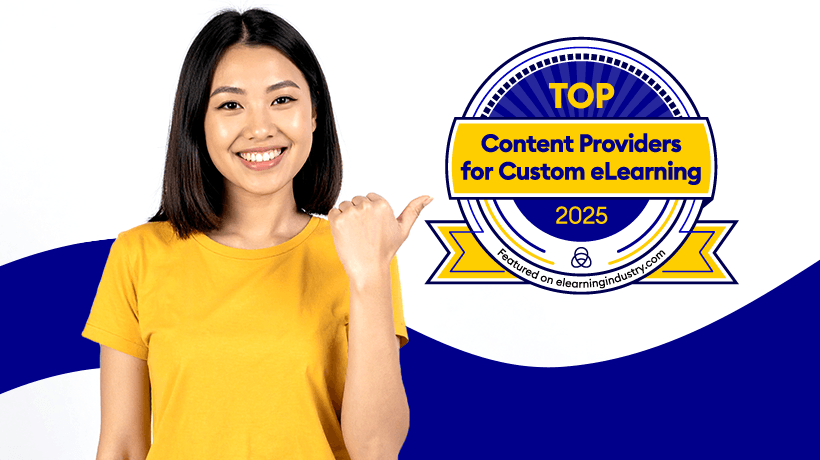How To Create Personalized eLearning Courses
The term "personalization" often pops up in eLearning articles, forums, and guides. But what does it really mean? In the truest sense, personalized eLearning involves eLearning activities, assessments, and content that meets the online learner's individual needs. It allows them to reach their goals and solve everyday problems without having to keep pace with their peers. Here are the 7 best practices to follow when developing personalized eLearning experiences.
1. Create Learner-Centered Goals And Objectives
Online learners must be able to see the proverbial light at the end of the tunnel. This comes in the form of learning goals that are relevant in their lives. It's essential to survey, interview, and assess your online learners beforehand to integrate their objectives into your eLearning course design. Your organization should already have the learning objectives in place. But you must also take the needs of your online learners into consideration. They need to achieve their desired outcomes, as well. Otherwise, they won't have the motivation or drive to actively participate in the eLearning process.
2. Assess Online Learners To Identify Knowledge Gaps
Identifying knowledge and skill gaps is yet another reason for online learner pre-assessments. You'll only be able to give them the information and skill development they need once you gauge their current understanding. In addition to multiple choice and other quantitative eLearning assessments, you can use branching scenarios and simulations to verify their level of experience. This also allows you to determine how well they know the topic and if they're able to apply it in the real world. These qualitative eLearning assessment methods give online learners the opportunity to put the information into context, and pinpoint strengths and weaknesses. Then they can access the eLearning materials and supplemental resources to bridge knowledge gaps.
3. Offer Timely Personalized eLearning Feedback
There are two reactions to a mistake. The first is completely overlooking it and pretending it never happened. The second is acknowledging it and then learning from it. The problem with the first scenario is that you commit inaccurate information to memory. You never let your brain know that it's false, so it accepts it as the truth. However, immediate eLearning feedback has the power to prevent the knowledge retention process, in a good way. Feedback stops the brain in its tracks and gives it the correct details. As a result, online learners absorb and assimilate the information they need to achieve their learning objectives. So, offer your online learners personalized feedback as soon as possible to get them on the right track.
4. Let Online Learners Choose Their Own eLearning Activities And Multimedia
One of the cornerstones of personalization is offering learner-centered eLearning activities, eLearning assessments, and multimedia. Online learners should have the opportunity to choose the eLearning materials that help them reach their goals. They are also looking for eLearning activities and modules that cater to their learning behaviors and personal preferences. As an example, one online learner may need to focus on their communication skills and they prefer more visual eLearning activities. Their learning tools-of-choice would be online presentations, eLearning video-demos, and task timelines. On the other hand, someone else is trying to build another vital skill set and fares better with audio eLearning content. This individual might seek out eLearning podcasts and webinars that center on their skill gap. Instead of incorporating a linear navigation map, offer online learners a clickable guide that features diverse eLearning activities and multimedia.
5. Set Manageable Milestones
Motivation is a major challenge for personalized eLearning, especially in asynchronous eLearning courses. Online learners have the ability to pursue their own goals and objectives. But their drive and determination can start to wane if long term tasks are involved. For example, a more complicated goal that involves multiple steps or takes several weeks to accomplish. eLearning professionals have the power to remedy the situation by creating more manageable milestones. Develop a personalized timeline that online learners can use to stay on track and monitor their progress. This also allows them to set secondary, short-term goals and manage their time more effectively.
6. Incorporate Online Resource Libraries For Asynchronous eLearning
Speaking of asynchronous eLearning, online resource libraries are ideal for self-paced eLearning instruction, as online learners have the chance to access the eLearning materials round-the-clock. They can also target specific skills or topics to improve their comprehension. For instance, an eLearning video-demo when they are unable to complete a task at work. Again, be sure to incorporate a good mix of online resources so that you cater to different learning behaviors and preferences. You can even take it a step further by inviting online learners to submit links or create their own online resources. For example, developing an online presentation to share with their peers so that they can solicit their feedback.
7. Provide Ongoing Online Support
Personalized eLearning experiences must have a solid online support strategy to act as a framework. This involves online FAQs, forums, social media groups, and direct contact methods, such as email and instant messaging. Online learners should have the power to interact with their peers and online instructors on a regular basis. This allows them to address their concerns and ask pressing questions in a timely manner. For instance, clarify a topic they are currently studying or ask for tips to improve their performance. If they don't have access to reliable online support, they may become frustrated and disengage from the online learning community. As a result, they won't get the full benefit from your personalized eLearning course.
Personalized eLearning does away with the "one size fits all" approach to meet the individual needs of your online learners. They have the opportunity to pursue their goals and actively engage in eLearning that is relevant to their lives. As a result, every member of your audience gets something unique and useful from your eLearning course design.
Variables provide yet another way to personalize your eLearning course. Read the article 6 Tips To Use eLearning Course Variables To Create Personalized eLearning to discover some useful top tips to help you use eLearning course variables in your eLearning course design.








